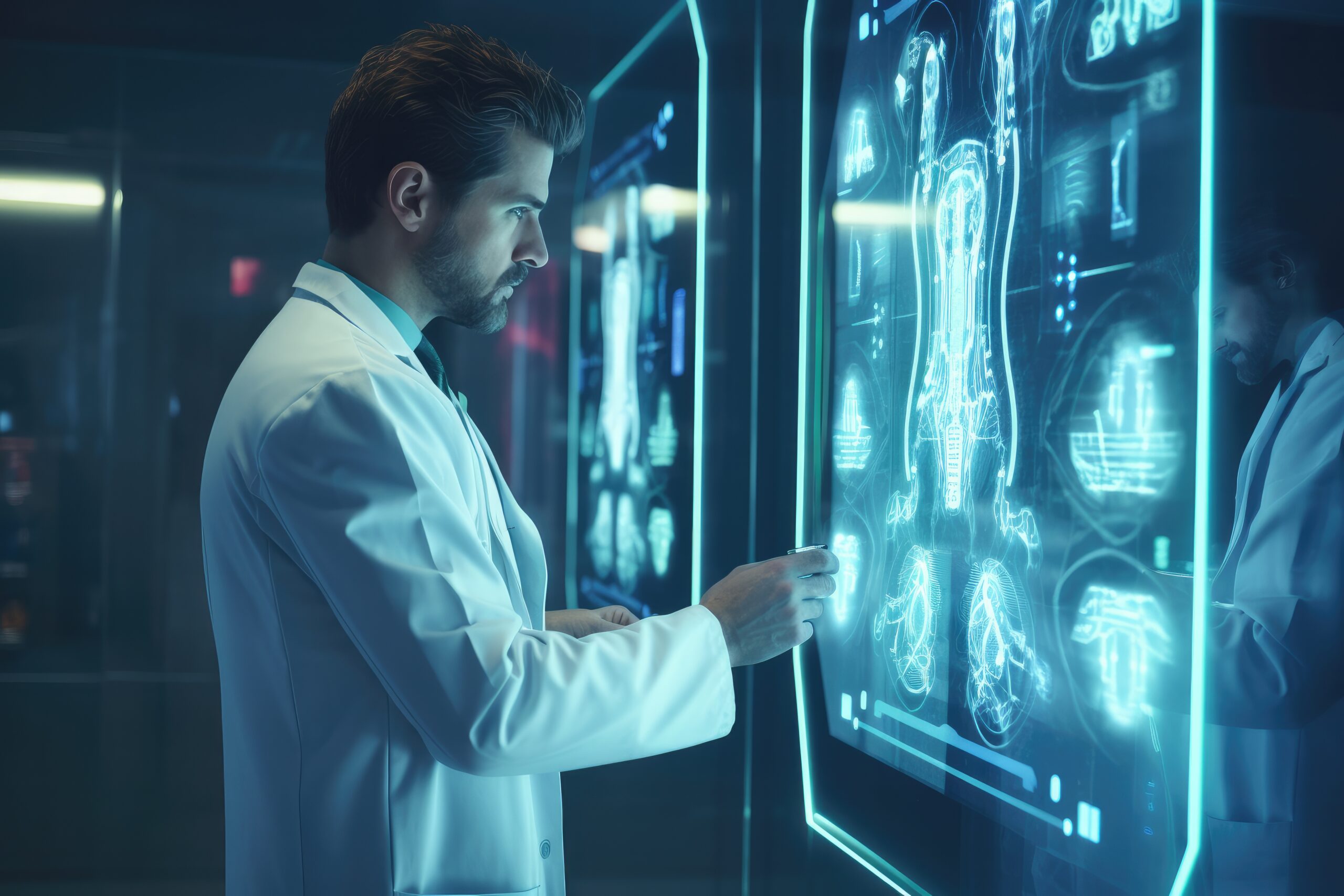Introduction
In the rapidly evolving world of medical technology, one of the most groundbreaking developments is the integration of computer vision into diagnostics. In the quest for better care, healthcare providers are turning to the latest and greatest tech innovations.
Computer vision, a subset of artificial intelligence, empowers healthcare professionals with the ability to extract meaningful insights from visual data, revolutionizing the way diseases are detected, diagnosed, and treated.
Medical Computer Vision involves the application of sophisticated algorithms and artificial intelligence (AI) to analyze diagnostic images such as X-rays, MRIs, and CT scans.
In medicine, Computer Vision proves beneficial by automating regular tasks like scan categorization and tissue differentiation, reducing the workload on healthcare professionals, and minimizing patient wait times.
Computer Vision in the healthcare market is projected to reach a substantial value of $22.2 billion by 2030, experiencing a remarkable growth of 47.8% (CAGR) from 2023 to 2030.
Benefits in Healthcare
Accurate Imaging Analysis: Computer Vision bolsters the speed and accuracy of image analysis. This helps doctors diagnose diseases better. It also reduces the scope of human errors.
Advanced Operating Rooms: Documenting surgical procedures can be tedious and requires a lot of human input, which can lead to errors and delays. Computer Vision overcomes this by autonomously observing and recording the entire procedure.
Improved Patient Identification: Tracking patients in a hospital can get hairy. If wrong medication or treatment is applied, it can lead to disastrous consequences. Computer Vision can assist in a convenient, compact and quick way to overcome this.
Better Healthcare Safety: Work-related illness and accidents can occur frequently in a healthcare institution. In this case negligent behavior can be immediately warned by a computer vision and AI system to prevent such happenings.
Faster Medical Research: Computer Vision can quickly scan hundreds of physical reports and form an opinion and line of enquiry to aid medical research. The analysis is objective and free from human bias and can lead to faster discovery and effective treatments.
Use Cases
Automated Cell Counting: In diagnostic centers cell cultures are examined for the cell density by manually counting the cells. This is prone to human error and oversight. Computer Vision can perform this task more reliably and quickly.
Medical Imaging: Medical Imaging helps visualization of organs and tissues to assist doctors. This helps in accurate detection of issues and thus suitable remedy. Some examples of medical imaging include Endoscopy and X-ray.
Tumor Detection: Computer Vision assisted by AI can detect tumors more efficiently than humans. Timely detection is critical to prevent tumors from spreading.
Cancer Detection: Computer Vision is more adept in distinguishing moles from melanomas. Doctors can identify lesions that can cause cancer and start remedial measures.
Medical Training: Computer Vision offers simulation platforms where doctors can gain knowledge and sharpen their skills. In this way Doctors can be trained for practical situations.
Monitoring Health: Computer Vision tracks procedures during surgeries, and assists Doctors in finding out the amount of blood required to replenish the loss. It can also be used to monitor physical ailments and compare progress with past impressions.
COVID-19 Diagnosis: Computer Vision can speed up the process of detection using techniques such as Radiography. Patients do not have to wait for RT-PCR tests which take time.
Mask Detection: Computer Vision can monitor groups for mask protection through CCTVs installed in public. This can help identify areas where more awareness is needed.
Remote Monitoring of Patients: Chronically-ill patients need to be monitored even after release from hospital. Computer Vision can help with such remote-monitoring. Similarly there are patients who are required to be quarantined – they can also be monitored like this.
Conclusion
Computer vision holds immense potential for revolutionizing Healthcare. From image recognition and disease localization to AI-assisted diagnosis and decision support, the applications are many.
As a testament to its efficacy, computer vision not only optimizes medical operations but also reduces diagnostic errors and false negatives, revealing critical, often overlooked anomalies. Doctors can use such systems for identifying diseases early, track recovery and train interns.
Medical Computer Vision thus represents a new era in Healthcare and Diagnostics. A better, more technologically empowered future is within reach if we seize this opportunity and assiduously integrate Computer Vision into our healthcare systems.
